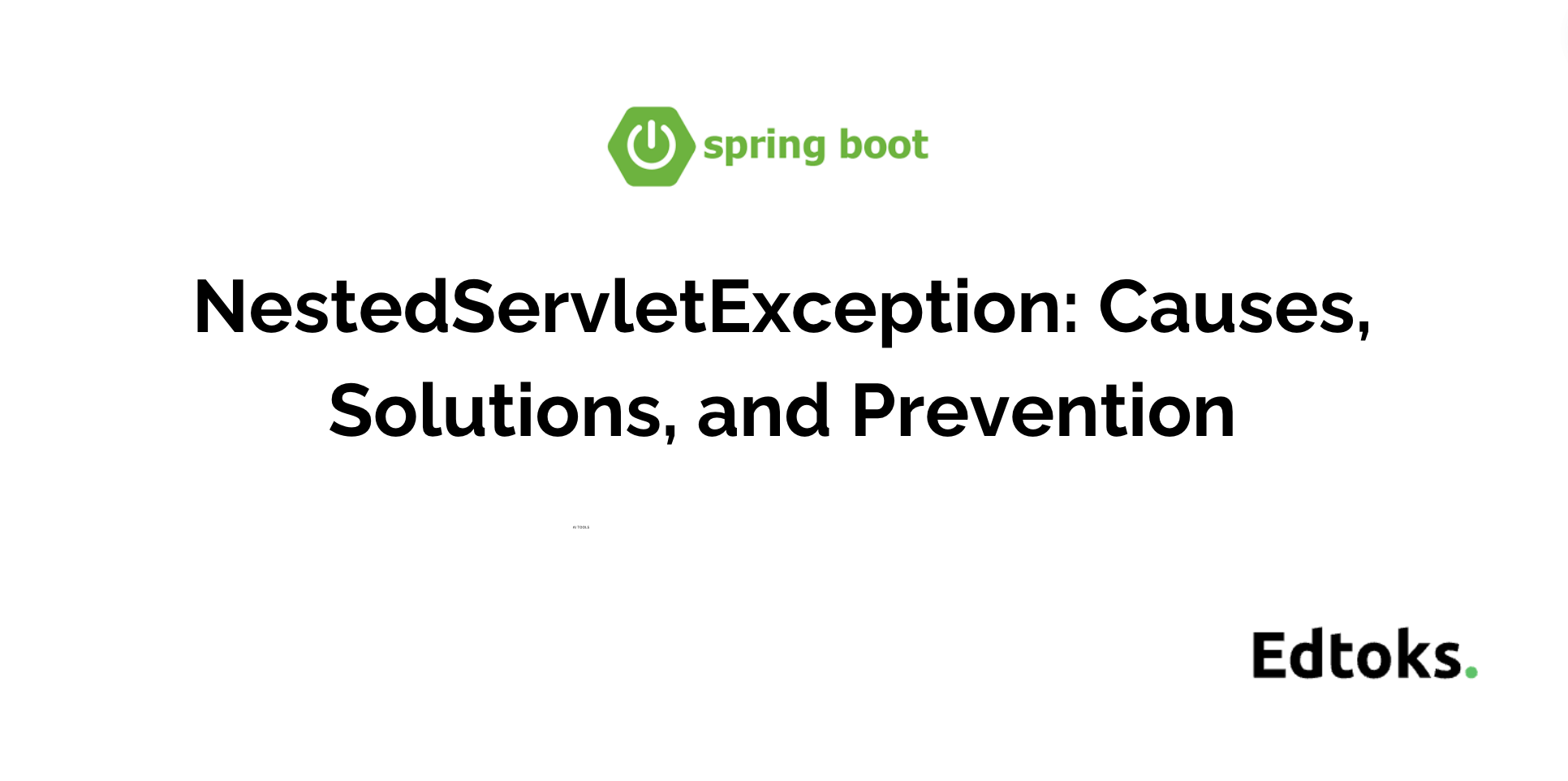In Spring Boot applications, exceptions are an unavoidable part of the development process. They provide valuable information about potential problems and help developers to identify and resolve issues. Among the various exceptions that can occur in Spring Boot applications, this NestedServletException is a common one. This exception is a wrapper exception that encapsulates other Servlet exceptions, providing a more detailed view of the underlying issue.
Let's check what this exception looks like
org.springframework.web.util.NestedServletException: Request processing failed; nested exception is
Causes of NestedServletException
The NestedServletException is typically thrown when there is an error processing a request in a Spring Boot application. This can occur due to a variety of reasons, including:
Invalid request parameters or headers: If a request is sent with invalid parameters or headers, Spring Boot will attempt to bind them to method arguments in the controller. If the binding fails, a
NestedServletExceptionwill be thrown.Data access errors: When accessing data from a database or other data source, errors can occur due to connectivity issues, invalid queries, or other data-related problems. In such cases, Spring Boot will throw a
NestedServletExceptionto indicate the data access error.Method argument validation failures: Spring Boot provides method argument validation capabilities to ensure that method arguments are valid and meet certain criteria. If an argument fails validation, a
NestedServletExceptionwill be thrown.Resource not found errors: When attempting to access a resource, such as a file or database record, that does not exist, Spring Boot will throw a
ResourceNotFoundException, which is wrapped by aNestedServletException.
Examples and Explanations
To better understand the NestedServletException, let's consider a couple of examples below and its explanation.
Invalid Request Parameter
Consider a controller method that expects a request parameter named id to be of type Long. If the request is sent with an invalid value, such as a string, Spring Boot will attempt to bind the value to an Long object, resulting in a type mismatch exception. This underlying exception will be wrapped in a NestedServletException and thrown by the controller.
@GetMapping("/api/products/{id}")
public Product getProductById(@PathVariable String id) {
Product product = productRepository.findById(id).orElseThrow(() -> new ProductNotFoundException(id));
return product;
}
This code is similar to the previous example, but it attempts to retrieve a product using a String id parameter instead of a Long id parameter. This will cause aTypeMismatchException to be thrown, which will be wrapped in aNestedServletException and returned by the controller.
Resource not found errors
@GetMapping("/api/products/invalid-id")
public Product getProductByInvalidId() {
Product product = productRepository.findById(1000L).orElseThrow(() -> new ProductNotFoundException(1000L));
return product;
}
This code attempts to retrieve a product with an invalid ID (1000L) that does not exist in the database. This will cause a DataIntegrityViolationException to be thrown, which will be wrapped in a NestedServletException and returned by the controller.
Method argument validation failures
@PostMapping("/api/products")
public Product createProduct(Product product) {
return productRepository.save(product);
}This code attempts to create a new product without providing a name or a price. This will cause a MethodArgumentNotValidException to be thrown, which will be wrapped in a NestedServletException and returned by the controller.
Data access errors
@GetMapping("/api/products")
public List<Product> getAllProducts() {
List<Product> products = productRepository.findAll();
if (products.isEmpty()) {
throw new DataAccessException("Unable to retrieve products");
}
return products;
}
This code attempts to retrieve all products from the database, but it also throws a DataAccessException if no products are found. This exception will be wrapped in a NestedServletException and returned by the controller.
I hope this helps you understand the different causes of NestedServletException and how to handle them in your Spring Boot applications
Handling NestedServletException
Handling NestedServletException involves identifying the underlying exception and taking appropriate action. In general, the approach involves:
Logging the exception: Logging the exception provides a record of the error and aids in debugging and troubleshooting.
Analyzing the exception message: The exception message often provides valuable information about the cause of the error, such as invalid parameters or data access issues.
Identifying the underlying exception: Unwrapping the
NestedServletExceptionreveals the underlying exception, which provides more specific details about the error.Taking appropriate action: Based on the underlying exception, take appropriate action to resolve the issue. This may involve correcting invalid parameters, retrying data access operations, or providing informative error messages to the user.
Preventing NestedServletException
To minimize the occurrence of NestedServletException, consider implementing preventive measures such as:
Thorough input validation: Validating request parameters and headers upfront can prevent many errors related to invalid data.
Robust error handling: Implement error handling mechanisms to catch and handle data access errors, resource not found errors, and other exceptions gracefully.
Clear and informative error messages: Provide clear and informative error messages to users when exceptions occur, helping them understand the issue and take corrective actions.
Understanding the causes of NestedServletException, analyzing its message, and implementing preventive measures, developers can effectively deal with this exception and maintain the stability of their Spring Boot applications.
